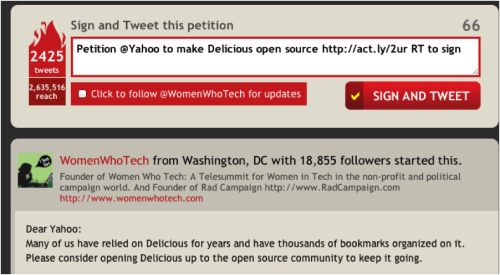 Change is hard.
Change is hard.
When your organization is going through major transition it’s important to keep your supporters in the loop and address their concerns. Budget priorities may force you to close major programs, maybe you’re making a strategic choice to focus on your organization’s core competency and handing off part of your operations to a partner peer organization better equipped to handle certain services, or perhaps benchmarking and research have helped your team has uncovered a better way to handle the work and serve your community. Whatever the case, when you’re undergoing major organizational and programmatic changes be thoughtful in the way you share the news.
Taking a look at the ways technology companies have informed their users about product changes is instructive for nonprofits looking to announce big changes in a thoughtful way.
Technology in Transition
Google’s decision to close Reader’s sharing features to cajole people into using Google+ got me thinking about this. Many of the service’s most active users were uppset and the changes prompted petitions, outrage on Twitter, and a strong response from Iranian bloggers who relied on the service to dodge government censorship. Many people who have invested time cultivating community on Reader feel that Google doesn’t care about their needs and should have been more transparent about the changes.
Google’s not alone in prompting this kind of strong response in the way it rolls out changes. Every time Facebook updates its features, layout, or privacy features it seems to upset some portion of its community. Yahoo faced a similar panic among Delicious users when the news leaked that Delicious would be closing and Yahoo lost its chance to explain the transition and where the service was heading to users on it’s own terms. Discussion about other services to transfer social bookmarks to sparked up immediately, and users petitioned Yahoo not to sunset the service.

Soon after Google acquired PostRank, a powerful RSS tool, without warning the service stopped accepting new accounts. In my own experience, many of the useful metrics that were typically included in Postrank reporting emails simply stopped appearing. Marshall Kirkpatrick shared his frustration about the issues saying
“Here at ReadWriteWeb we use Postrank every day and if Google shuts it down I am going to be sick.”
Unlike technology consumers, for some nonprofits that sentiment is literal.
Be Transparent About Community Concerns
Even small changes to your program are likely to be a big deal to someone in your community. Closing key health and wellness programs can have dramatic and immediate consequences for community health, closing after school programming can put a lot of parents in an immediate bind, choosing to prioritize youth leadership programming over senior social events and watch the phone calls roll in.
Tips to Ease Transition
Be sensitive to the minority voices - You don’t want to alienate your most passionate advocates and supporters. When you have to make some hard choices, make sure people know you care about their needs and that decisions aren’t being made litely.
Let people into the conversation - Letting people know when programs are in financial trouble can motivate your community to rally and raise the necessary funds to keep their favored programs running. If you keep people aware of the choices you are facing, you won’t catch them offgaurd when you make your decision.
Listen - Before you dive into a major transition, especially if your thinking about closing a major program, think carefully be sure you understand who will be affected. If it’s the right choice for your organization and community’s health, move forward, but understand the impact of your choices so you can explain them well.
Direct people to alternatives – Pivoting your organization to focus on what you do best can give you a needed boost, but think about what resources you can direct people to that will fulfill their needs from other places in the community.
Don’t get Scooped – Announce changes on your own terms, in a sensitive and thoughtful way. You don’t want people getting upset about a program closing before you’ve made a decision and put your transition plan in place, or worse, getting angry unneccessarily when you’ve already decided to leave things in place as they are.
How have you navigated major transition in your nonprofit? What advice would you give to organizations in transition?


COMMENTS